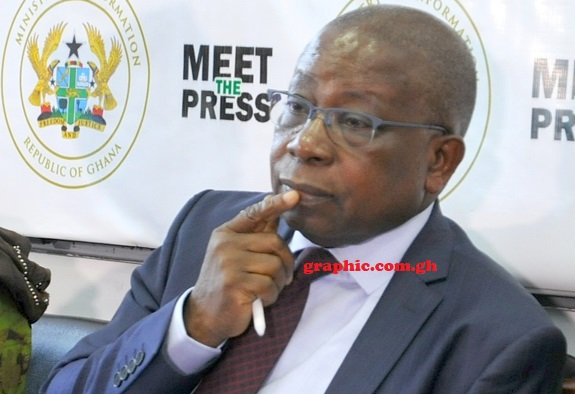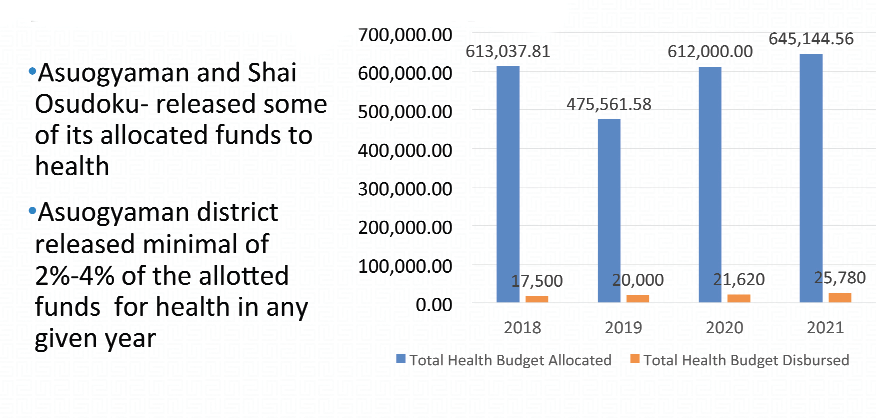
National immunisation budget: Civil society wants adequate funding, timely releases
Routine immunisation is considered an antidote to preventable diseases globally.
Advertisement
It saves millions of lives every year.
“Vaccines reduce risks of getting a disease by working with your body’s natural defences to build protection. When you get a vaccine, your immune system responds,” the World Health Organisation (WHO) said.
According to the global health body, there were now vaccines to prevent more than 20 life-threatening diseases thus, helping people of all ages to live longer and healthier lives. Immunisation currently prevents 3.5 million to five million deaths every year from diseases such as diphtheria, tetanus, pertussis, influenza and measles.
In Ghana, immunisation is embedded in primary health as it is an indisputable human right. The government has made it a priority and demonstrated this by the endorsement of international frameworks such as the Agenda 2030, the WHO’s regional strategic plan for immunisation – (2014 – 2020), and the Addis Ababa Declaration on Immunisation.
It has topped it up by prioritising immunisation services in both the 2022-2025 National Medium-Term Development Framework and the Health Sector Medium-Term Development Plan (HSMTDP) 2022-2025.
This falls in line with strategic priority two of the Immunisation Agenda 2030 (IA2030), which requires countries to show commitment by valuing immunisation as a public good and made available as a key contributor to a fundamental right – the enjoyment of the highest attainable standard of health.
Routine immunisation in Ghana includes vaccines against tuberculosis (BCG), Rotavirus vaccine and pneumococcal vaccine, Diphtheria, Pertussis, Tetanus (DPT), Hepatitis B (HEB) and
Haemophilus influenza type B (HIB), as well as Measles-Rubella vaccines.
Using the third dose of Pentavalent (Penta 3) as a representative, the country’s immunisation coverage exceeded international benchmarks to 98 per cent in 2021, according to figures sourced from WHO.
However, on regional bases, some areas recorded coverage below the national coverage. Whatever the case, the country’s immunisation coverage is above average as it has also put in place appreciable standards and a level of cold chain infrastructure for vaccine storage to deliver on the strategy.
No direct budget lines
The country funds routine immunisation and vaccines from tax revenue, complemented by grants and concessionary credits from development partners. The main external funding sources are Gavi, the Vaccine Alliance, WHO and UNICEF.
Although there are no direct and specific budget lines in the national budget annually, local assemblies devote part of their allocations towards routine immunisation, as part of their larger health budgets.
The funds are pooled from tax revenue transferred from the Ministry of Health, the District Assemblies Common Fund (DACF), Internally Generated Funds (IGF) and support from development partners.

Inadequate funding, untimely releases
Immunisation service, however, faces some challenges among which are financial constraints. This challenge comes in two folds: the inadequacy of funding and the late release of earmarked funds.
These are the major findings of an exercise conducted by SEND-Ghana and Hope for Future Generations (HFFG) to monitor the immunisation budget execution in some selected districts.
The monitoring was in partnership with the International Budget Partnership (IBP) and UNICEF.
The five districts purposively selected from four regions are Shai Osudoku, Asuogyaman, Ho, Tatale/Sanguli and Kasena Nankana Municipal District.
The monitoring exercise found that the release of funds for immunisation activities was not timely.
This is largely attributed to the delay in the release of funds from the national level to the district, which affects the level of support the district assemblies provide to their Health Management Teams (DHMTs).
According to respondents in four of the districts, inadequate and late releases of funds impeded the implementation of immunisation outreach service delivery to meet timelines and targets, given that immunisation services were time-bound.
The inadequacy, mainly, stems from the below budget releases associated with the Ministry of Health allocations, as well as transfers to the local assemblies (DACF).
The SEND-Ghana/Hope for Future Generation monitoring also found out, for instance, that while the government estimated the Comprehensive Multi-Year Plan (cMYP) 2020-2024 to cost $514 million it, however, released $266.5 million, approximately 52 per cent of projection, leaving a wide gap of 48 per cent.
By the plan, the annual expenditure was to grow from $5.3 million in 2020 to $8.9 million in 2022, reaching $13 million in 2024. The monitoring exercise, however, could not access information on how much of the projected cost was captured in the annual budget and released.
Such inadequacy of funding and the delay in the release of funds can only hinder regular monitoring and supportive supervision, which requires means of transport and its maintenance, supply of fuel, and the availability of a well-functioning cold chain infrastructure.
These challenges imply that some children who need immunisation may not be reached with all the required vaccines; thus, affecting the health of the future generation.
For instance, the inadequacy of funds in the Ho municipality in June 2020 resulted in a decrease in immunisation coverage in that month.
Way forward
Given the findings of the monitoring exercise, SEND-Ghana/HFFG and their partners recommend that the country should increase its budget on health and also release the funds in line with Sustainable Development Goals (SDGs) Indicator 16.6.1, which measures governments’ expenditure as a proportion of the original approved budget.
In that respect, civil society organisations want the Ministry of Finance to have a separate budget line for allocation to immunisation in the national health budget.
The government should also keep its commitment by fully releasing funds allocated to the Ministry of Health and/or transfers to fulfil its obligation to the Vaccine Alliance, Gavi.
Prepare for self-financing
Secondly, the government must deliberately increase allocation and releases as a preparation towards self-financing immunisation fully in the next few years. In so doing, the government will uphold budget credibility.
Thirdly, district assemblies should incorporate immunisation financing into their district plans and budgets. The first step is for it to reflect in their Medium-Term Development Plan (MTDP).
It is refreshing to note that the current MTDP (2022-2025) captures immunisation and this should be sustained in subsequent plans.
Conclusion
The DHMTs must remain open and transparent about the funds they receive from the Ministry of Health, district assemblies and donors for immunisation.
In that regard, they should share information on immunisation allocation and releases from the national level with the district assemblies, like the concept of ‘Publish what you earn’. This will reveal funding gaps and commit the assembly to provide realist funding for immunisation.
Also, the DHMTs should do their part of the bargain without blemish by requesting funds on time to trigger prompt releases.
Email: samuel.ablordeppy
@graphic.com.gh
Related articles:
Routine child immunisation vaccine shortage hits Ghana health facilities
Childhood vaccine shortage: Some will be available in two weeks - GHS assures




